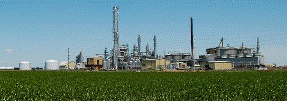Agricultural and Biological Systems Engineering, Department of

Adam Liska Papers
Document Type
Article
Date of this Version
10-29-2014
Citation
Published in Nature Climate Change vol 4, iss 11 (November 2014), pp. 934-935; doi: 10.1038/nclimate2423
Abstract
The soil organic carbon (SOC) model that we used was parameterized with data from arable land under normal farming conditions in North America, Europe, Africa and Asia, but the equation is insensitive to changes in tillage, soil texture and moisture. The model has reasonable accuracy, however, in predicting changes in SOC, residue remaining and CO2 emissions from initial SOC, carbon inputs from residue, and daily temperature; the shoot-to-root ratio used in the geospatial simulation was 0.29 (that is, root carbon is 29% of total aboveground carbon), which did not underestimate carbon input to soil (Supplementary Figure 2 in Ref. 1). There is more theoretical confidence in the conserved nature of SOC oxidation due to temperature relative to other factors such as tillage. In a recent comparison of three SOC models (CENTURY, DAYCENT and DNDC), predictions were close to or within the range of uncertainty of estimates derived from soil measurements, showing that these models tend to produce similar results from residue removal. (A range of soil measurements have also shown net SOC loss from residue removal.) The model also agreed well with CO2 emissions measurements from an AmeriFlux field site, which since 2000 has been funded with $7,370,000 from the US Department of Energy, the US Department of Agriculture and NASA, leading to over 85 peer-reviewed publications.
Included in
Atmospheric Sciences Commons, Bioresource and Agricultural Engineering Commons, Climate Commons, Environmental Engineering Commons, Environmental Monitoring Commons, Natural Resource Economics Commons, Oil, Gas, and Energy Commons, Other Environmental Sciences Commons, Sustainability Commons


Comments
The “Reply” addresses 3 commentaries preceding it in this issue.
Copyright © 2014 Macmillan Publishers Ltd. Used by permission.